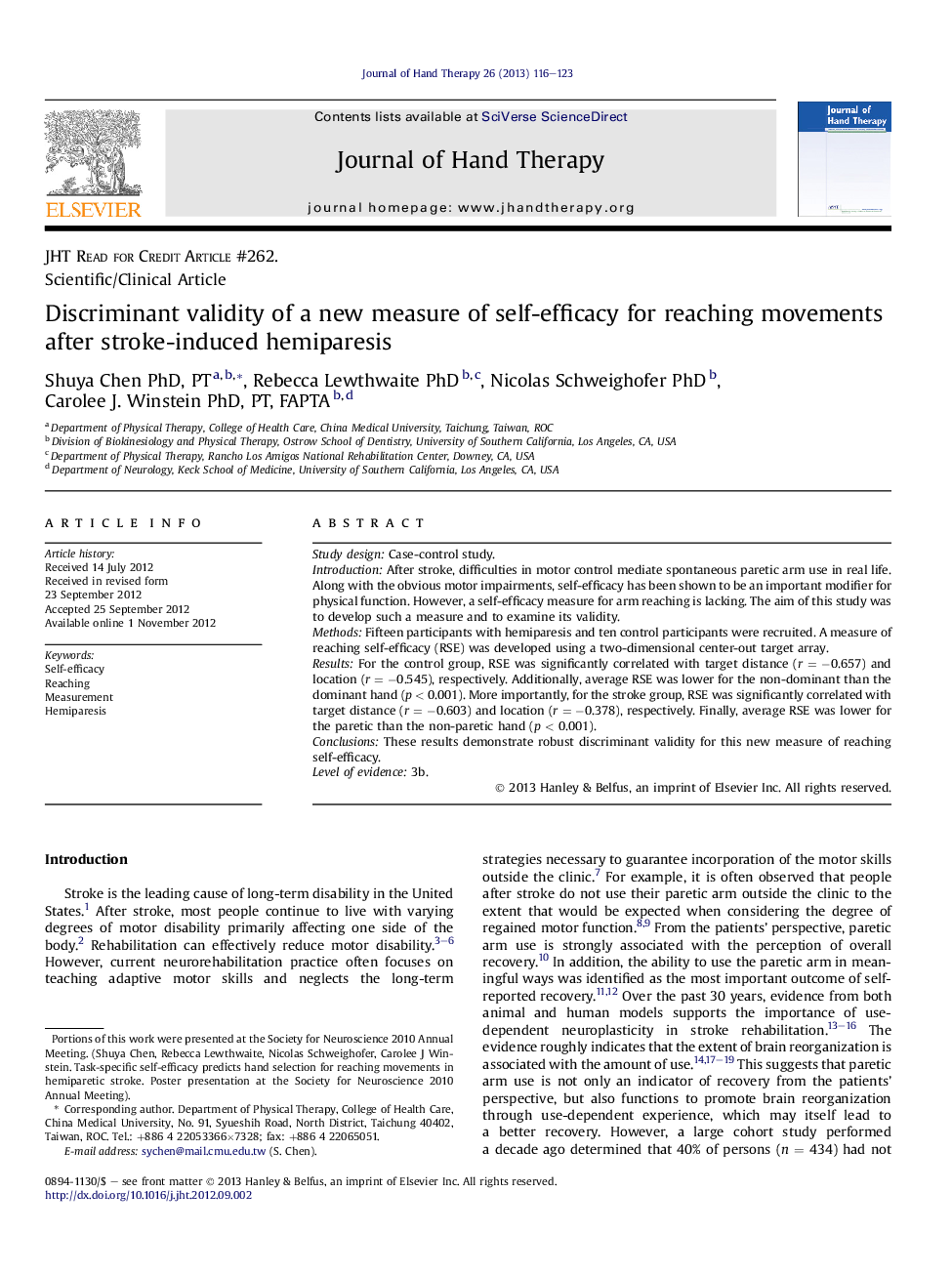| Article ID | Journal | Published Year | Pages | File Type |
|---|---|---|---|---|
| 2692075 | Journal of Hand Therapy | 2013 | 8 Pages |
Study designCase-control study.IntroductionAfter stroke, difficulties in motor control mediate spontaneous paretic arm use in real life. Along with the obvious motor impairments, self-efficacy has been shown to be an important modifier for physical function. However, a self-efficacy measure for arm reaching is lacking. The aim of this study was to develop such a measure and to examine its validity.MethodsFifteen participants with hemiparesis and ten control participants were recruited. A measure of reaching self-efficacy (RSE) was developed using a two-dimensional center-out target array.ResultsFor the control group, RSE was significantly correlated with target distance (r = −0.657) and location (r = −0.545), respectively. Additionally, average RSE was lower for the non-dominant than the dominant hand (p < 0.001). More importantly, for the stroke group, RSE was significantly correlated with target distance (r = −0.603) and location (r = −0.378), respectively. Finally, average RSE was lower for the paretic than the non-paretic hand (p < 0.001).ConclusionsThese results demonstrate robust discriminant validity for this new measure of reaching self-efficacy.Level of evidence3b.
